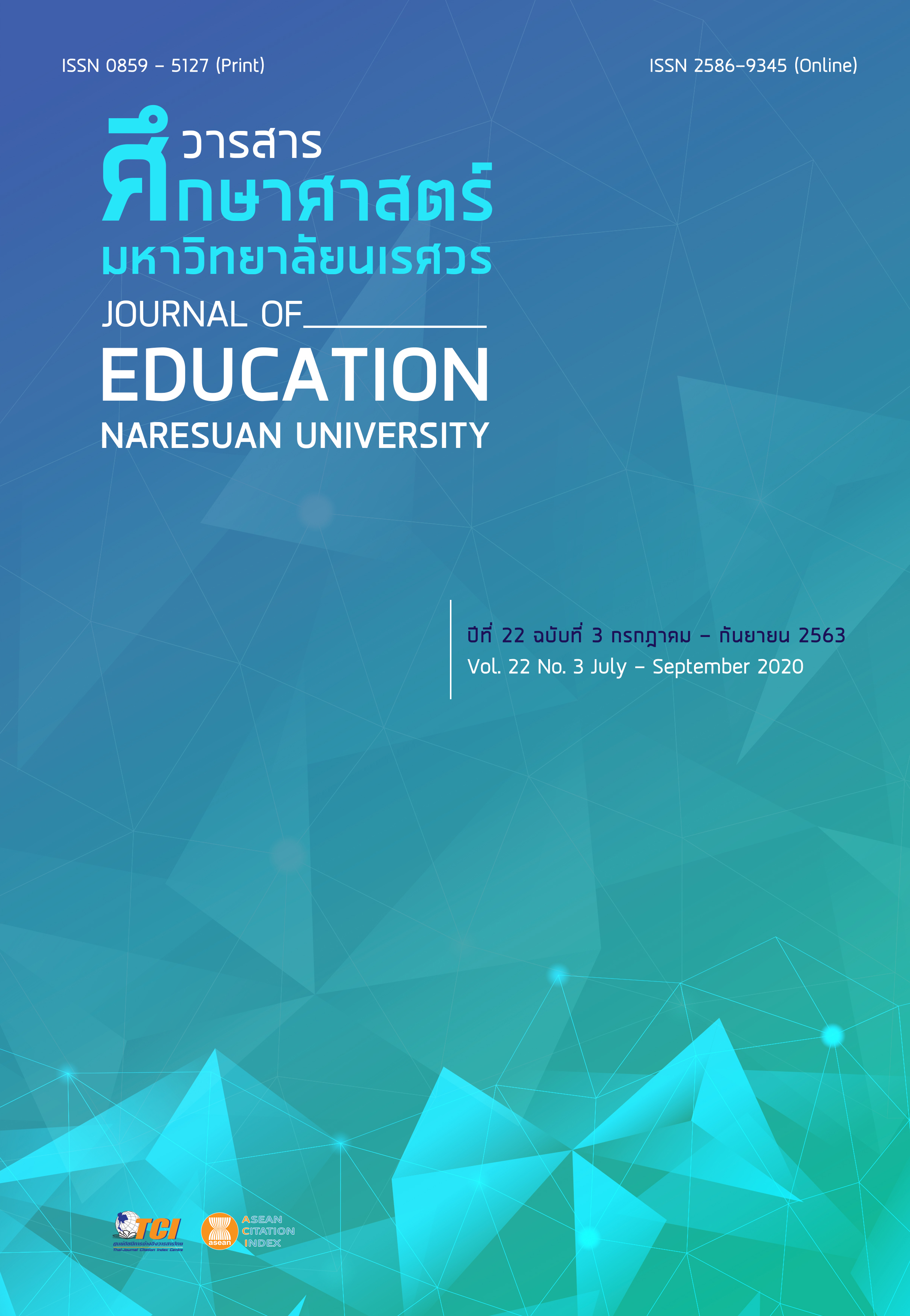THE DEVELOPMENT OF STUDENTS DIGITAL CITIZENSHIP SCALE AND NORMS IN HIGHER EDUCATION INSTITUTIONS การพัฒนาแบบวัดและเกณฑ์ปกติความเป็นพลเมืองดิจิทัลของนิสิตนักศึกษาในสถาบันอุดมศึกษา
Main Article Content
Abstract
The main purpose of this research is to develop the digital citizenship scale and norms of students in higher education institutions. The specific purpose of this research were 1) develop the digital citizenship indicators and behavioral Indicators of students in higher education institutions, 2) develop and investigate the validity, discrimination, and reliability of digital citizenship scale of students in higher education institutions, and 3) develop the norms for digital citizenship scale of students in higher education institutions. The sample of the study was 3,604 students in higher education institutions who were selected by using multi-stage sampling.
The research instrument was the digital citizenship scale. The data were analyzed by using median, interquartile range, percentile, T-score, and confirmatory factor analysis. The result revealed that:
1. There were 11 indicators and 25 sub-indicators for digital citizenship of students. Their appropriateness was between a high level and the highest level.
2. The digital citizenship scale of students contained 50 items. The questions were situation test with 4 behavioral choices. Regarding the quality of the digital citizenship scale, it was found that the questions had content validity, discrimination, and construct validity of all questions met the criteria. The reliability was 0.971. Moreover, the digital citizenship scale correlated with empirical data and had construct validity (Chi-square = 36.489, df = 27, p-value = 0.105, RMSEA = 0.023, CFI = 0.998, SRMR = 0.010).
3. The norms for assessing of digital citizenship of students can be divided into 4 levels: digital citizenship at a high level, fairly high level, fair level, and low level.
Article Details
The owner of the article does not copy or violate any of its copyright. If any copyright infringement occurs or prosecution, in any case, the Editorial Board is not involved in all the rights to the owner of the article to be performed.
References
Castells, M. (2000). Communication power. New York: Oxford University Press.
Clark ,C. D. (2005). Percentile. In Everitt, B. S. & Howell, D. C. (Eds.). Encyclopedia of Statistics in Behavioral Science (pp. 207-227). Chichester: Wiley.
Eric, S., & Jared, C. (2014). The new digital age: Reshaping the future of people, nations, and business. London, UK: John Murray.
Gazi, Z. A. (2016). Internalization of digital citizenship for the future of all levels of education. Education and Science Journal, 41(186), 137-148.
International Society for Technology in Education. (2007). National Educational Technology Standards for Student (2nd ed.). Eugene, OR: International Society for Technology in Education.
Jangsiripornpakorn, A. (2007). Principles of measurement and evaluation of education. Bangkok: Chulalongkorn University Press. [in Thai]
Lobato, M. (2015). Marketing to generation z: Why your millennial plan is kaput. Retrieved from http://text100.com/articles/marketing-to-generation-z
Ministry of Education. (2009). National Higher Education Thailand Qualifications Framework B.E. 2552. Bangkok: Office of the Higher Education Commission. [in Thai]
Motowidlo, S. J., Dunnette, M. D., & Carter, G. W. (1990). An alternative selection procedure: The low-fidelity simulation. Journal of Applied Psychology, 75, 640-647.
Musikaphan, W., & Pokpong, S. (2010). Factors affecting the attitude and behavior of both physical violence and bullying through the cyber world of Thai youth. Bangkok: The Wisdom Society for Public Opinion Research of Thailand. [in Thai]
National Statistical Office. (2018). Summary of Important Results Explore the Use of Digital Technology and Household Communication B.E. 2560. Bangkok: Ministry of Digital Economy and Society. [in Thai]
Office of the Education Council. (2017). National Education Plan of Thailand No.12 (B.E. 2560-2574). Bangkok: Prikwarn Graphic. [in Thai]
Office of the National Digital Economy and Society Commission. (2017). Digital Development for Economic and Social Development Act B.E. 2560. Bangkok: Ministry of Digital Economy and Society. [in Thai]
Office of the National Economic and Social Development Council. (2018). Thailand’s 20 Year National Strategy (B.E. 2561-2580). Bangkok: Office of the National Economic and Social Development Council. [in Thai]
Park, Y. (2016). 8 digital skills we must teach our children. Retrieved from https://arbogasts.wordpress.com/2016/06/15/8-digital-skills-we-must-teach-our-children/
Pescetta, M. (2011). Teaching digital citizenship in a global academy (Doctor dissertation). Fort Lauderdale, FL: Nova Southeastern University.
Ribble, M. (2011). Digital citizenship in school (2nd ed.). Eugene, Oregon: The International Society for Technology in Education.
Ribble, M., et al. (2007). Digital Citizenship in Schools. Eugene, Oregon: The International Society for Technology in Education.
Ritcharoon, P. (2012). Principles of measurement and evaluation of education (7th ed.). Bangkok: House of Kermyst. [in Thai]
Saiyot, L., & Saiyot, A. (2000). Learning measurement techniques. Bangkok: Children's Club. [in Thai]
Schultheiss, O. C., et al. (2009). Are implicit and explicit motive measures statistically independent? A fair and balanced test using the picture story exercise and a cue-and response-matched questionnaire measure. Journal of Personality Assessment, 91(1), 72-81.
Suttipong, R. (2017). A new paradigm in education and development of Thailand teachers in the digital age. Journal of Education Naresuan University, 19(2), 344-355. [in Thai]


